|
I grew up believing that the key to success in life was be responsible and hard working. One needs to plan (and worry) and strive (and worry) and do your best at all times (or else). This is all (mostly) true but it is not the whole story. Process painting opens up other possibilities. If it truly doesn't matter what the picture looks like, then I don't have to have a plan. If mistakes are part of the process, I don't need to do my best. Most of all, if I stay connected to myself in the moment, it is very hard to worry. I struggle with the idea that I don't have to worry the future into existence but process painting has taught me, again and again, that if I can let go of planning and worry, then wonderful and unexpected things happen. But it still didn't feel finished. So I added pink and red, greens, yellows and white and came out with something quite surprising:
0 Comments
At the end of each workshop, I ask painters to give me feedback about their experience. It is no surprise that the painter who took great delight painting giant glittery flowers had a good time. It makes sense that the one whose painting evolved from a dark tangle into a powerful tree felt better when she was finished. What is interesting is how often the ones who painted the darkest, most painful feelings consistently tell me that they feel lighter when they finished. Painting dark emotions can be intense. When I first became a facilitator, I worried that some people might leave a workshop feeling worse. Since then, I’ve learned to trust that something magical happens when a process painting goes to difficult places. 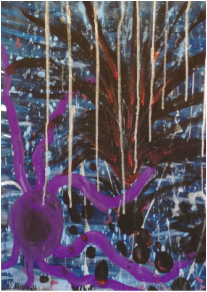 Before painting, the dark feelings are churning around inside. After, you can step back from the painting and see their shape and color on the paper. Maybe some of that magic comes from taking the emotion out of your body and putting it on paper. Maybe some of it happens when you can step back and take in what you created, allowing you to see and reflect and not just feel. Painting allows the emotions to come out a way that is totally safe and without hurting anyone else. After all, it is just a picture, nobody else needs to see it. I’m sure someday a painter will tell me that she felt miserable after a workshop (and if that painter is you, please let me know so that I can support you) but that will not shake my belief that magic happens when we truly listen to our own experience and allow it to guide us while putting paint on paper. My recent painting retreat at the Ghost Ranch in New Mexico has recharged my enthusiasm for intuitive painting. The basic idea of process painting is simple - focus on your own process or experience as you paint without worrying about how the product will look. Last week I wrote about how to explore the deeper meanings in a painting and they can certainly be powerful way to get new insights into your psyche. However, there is much more be learned from the experience of process painting. Here is a quick list of other reasons why I paint: 1. I can be big! powerful! sexy! And also small, scared and constrained. Sometimes in the same painting. And it is all OK.
3. I'm learning to listen to my intuitive, creative self. When I'm painting, any impulse can be giving space, it doesn't have to make sense. So I get practice in paying attention to those non-logical instincts that carries over into every day life.
4. I get to practice taking risks when it really, truly doesn't matter. I hate painting people because I just know they won't turn out right. Guess what? I did it anyway and it was OK. It's making me braver since I'm learning that just because it feels scary doesn't mean that it is really dangerous. 5. I feel better when I am done. In process painting, we try to follow the energy, good or bad. Even painting the difficult or uncomfortable parts is a release of energy that makes feel great when I'm done. Process painting can be a wonderful way to tap into your subconscious mind but sometimes what shows up on the paper just doesn’t make sense. Of course, not all painting need to make sense. Maybe you just like the motion of the brush in your hand or you are exploring the way the colors look on the paper. In that case, just embrace the experience, everything is fine. But, sometime, you can sense that the painting is tapping into your deeper consciousness and you don’t understand what it is telling you. When this happens, the first thing to do is to ignore the urge to understand until the painting is done. At this moment, the act of painting is allowing the intuitive, creative, nonverbal part of yourself to use line, color and image to send a message to the world. Trying to make sense of it shifts you into a logical mode that disrupts your creative process. There is plenty of time to be logical after you are done painting. Allowing yourself to stay in confusion allows you to stay in connection with your deeper self. However, once done, you can integrate the experience more fully by inviting the logical side of your brain making sense of what happened in its own, left-brain terms. When you sense that there is more meaning in a painting, here are some questions you can use to help your verbal, logical part of the brain figure out what happened. Questions to Uncover Meaning in Your Painting- Stand back and look at the picture as whole. What do you notice? How does it make you feel? - For each of the objects in the painting (for example, the web is one object, the background colors are another)
- If the painting were put into motion, what would happen next? - The painting was is a expression of painter in that moment. What do you think it says? As you work these questions, keep checking in with your intuition. Some questions will seem important and other irrelevant. Some answers will seem to fit, even they don’t quite make sense while others just don’t resonate. Trying to understand a painting as a message from your subconscious is very individual process. To get it right, you need to consider not just the final painting but also your own experience, first, as you painted it and, now as you look at it.
Sometimes, as you explore these questions, the meaning becomes very clear. Other times, even if you have a strong sense that the picture is trying to tell you something, the mystery of your painting stays a mystery. Rene Magritte wrote, “My painting is visible images which conceal nothing…they evoke mystery and indeed, when one sees one of my pictures, one asks oneself this simple question, ‘What does that mean?’ It does not mean anything, because mystery mean nothing either, it is unknowable.” Instead of my usual essay, here some thoughts about art:
The purpose of art is washing the dust of daily life off our souls. – Pablo Picasso Art is the only way to run away without leaving home. –Twyla Tharp I found I could say things with color and shapes that I couldn't say any other way - things I had no words for. – Georgia O’Keeffe Every artist dips his brush in his own soul, and paints his own nature into his pictures. – Henry Ward Beecher And my favorite, another from Pablo Picasso, Every child is an artist. The problem is how to remain an artist once we grow up. 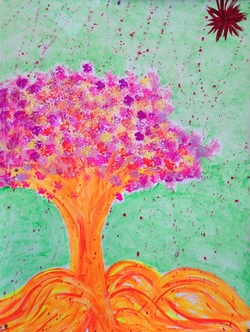 I love to invite people to play with paint at a process painting workshop. Why “play”? Answer 1: Play suggests having fun. Most of us do not allot much time to simply doing what gives us pleasure. If you can allow your inner child to take over and simply do what she whatever she wants with the paint, you will feel better – lighter, happier, less oppressed by worry even though nothing objectively changed in your life. Answer 2: Play suggests that we do things for enjoyment rather than a serious or practical purpose. Opening up your creative potential and learning to listen to your own intuition requires you to put your critical, logical, problem solving mind on hold. Answer 3: Play operates in a world of imagination where even serious acts don’t have serious consequences. You can shoot the bad guy as many times you want and no one really dies. You can paint horrible, frightening, angry things and no one gets hurt. You are just playing. Answer 4: Play suggests moving lightly, a flicker that appears and disappears. (As in “The smile played about her lips”) The voice of your subconscious yearnings is often soft, brief impulses that are hard to hear if you aren’t tuned in. If you allow yourself to play, to paint things that don’t make sense, to jump from one image to another “just because”, you create the opportunity for these tentative messages from yourself to show up. Answer 5: Children learn without realizing when they play. I invite painters to focus on the play when they paint and allow the learning to happen naturally. Afterwards, you can deepen the learning by allowing the logical, goal-focused part the brain to engage in trying to make sense of the experience. So, Paint! Play! Discover! 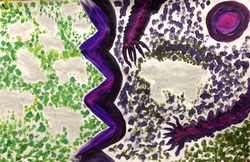 Orphan sheep by EAB Orphan sheep by EAB Last month, (here) I wrote about why you usually don’t want to covering things that have appeared in your painting. But paintings don’t like to follow rules. In the process of creation, the elements on the paper shift, change and transform as the painting comes to life. A line becomes a face, a face becomes a cloud, a cloud becomes hidden behind a leafy tree. I’ve written before about this process of transformation before. During this transformation, some things get covered by others. So how can you tell the difference between covering up and transforming? The best way to tell is check in with your own thoughts and feelings. If you notice judgment in your thoughts about how things should be, that might be covering up. Try allowing what is there to stay. If your thoughts and energy are focused on the new elements, go with the transformation. You can also check your energy level as you think about the options. If you feel scared, powerful and energetic, you are going in the right direction. If you feel tight and constricted, do something else. Still don’t know? Don’t decide, trust the brush instead. Put some paint on the brush, make a line and then see what happens. Above all, remember this is process painting. Whatever you do is what you do - you can’t do it wrong! 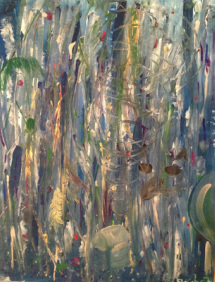 Forest shadows by EB Forest shadows by EB One of the rules that I learned in process painting was not to try to cover up “mistakes” in my painting. Not say I wasn’t tempted. Sometimes it was an errant brush stroke or drip in the wrong place. Other times, I painted something and didn’t like how it looked. There is a practical reason for this rule – painting over usually doesn’t on a technical level. However, paint doesn’t erase – once it is on the paper, it stays. Even if I tried to paint over it, the dim form of the “mistake” would still be visible underneath. There is deeper reason as well. One of the gifts of process painting is practice letting go of judgment and quieting our inner critic. The stronger the dislike, the greater the possibility that it is connect to deeper feelings about ourself, especially the parts of ourself that we don’t like very much. How do we know something is a mistake? Our critic is telling us so. What happens if we ignore that bullying voice? This is a chance to find out what it is like to live with imperfection, accept it and (maybe) even embrace it. What if you understand this logic but you still really want to cover something in your painting? Then paint over it and see what happens. After all, process painting is about the experience, not the results. Accept it, paint over it, or transform it something else, as long as long as you are paying attention your choices, it doesn’t really matter which one you choose. 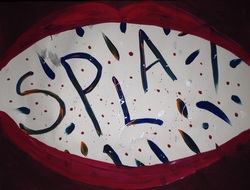 SPLAT! SPLAT! I've never found New Year's resolutions to be very helpful. Changing habits is hard and somehow turning of the new page on the calendar was never enough motivation to turn the good intentions into actual change. Since starting to do process painting, I've taken different approach to thinking about the new year. Before, I used my logical, judging mind to decide what I should be doing, then tried to make myself do it. Now, I use my paints to ask what my intuitive self is wishing for and look for opportunities to move in the direction of my heart. This January, the theme in my paintings seems to be explosions, messy volcanic type eruptions. My interpretation is that 2014 is going to be the year of creative self-expression (self-explosion?). I have no idea how all this energy is going to come out but I'm looking forward to finding out. The Greek philosopher, Heraclitus, said that no man can ever step in the same river twice, for its not the same river and he's not the same man. Each time you come to a process painting workshop, you are physically in the same place, confronting an identical sheet of white paper. Yet the "you" of this moment is never quite the same as the "you" of last month. If you stay in touch with what is alive for you in the moment, you will never be bored while painting.
At the same time, the "you" of today is not completely different from the "you" of before. As a result, you may find certain elements will show up again and again like fires or rainbows. (For me, it is trees keep showing up.)Or you may repeat a satisfying gesture - swoopy lines or handprints. Sometimes a painter will say, "I don't want to paint hearts any more." I ask if she doesn't want to paint hearts or she just thinks that she shouldn't. My rule: If you don't want to paint hearts, don't. If you do want to paint hearts, ignore the voice of judgement who says that it is repetitive or cliché and listen to your intuition. After all, Monet painted many, many paintings of water lilies - each one special record of its unique time and place. So, come back to the studio and step into your process, a unique experience every time. |
AuthorProcess painting is such a magical experience that I want to share. My invitation to you: Paint. Play. Discover. Archives
March 2016
Categories
All
|
| The Reflecting Canvas |
|
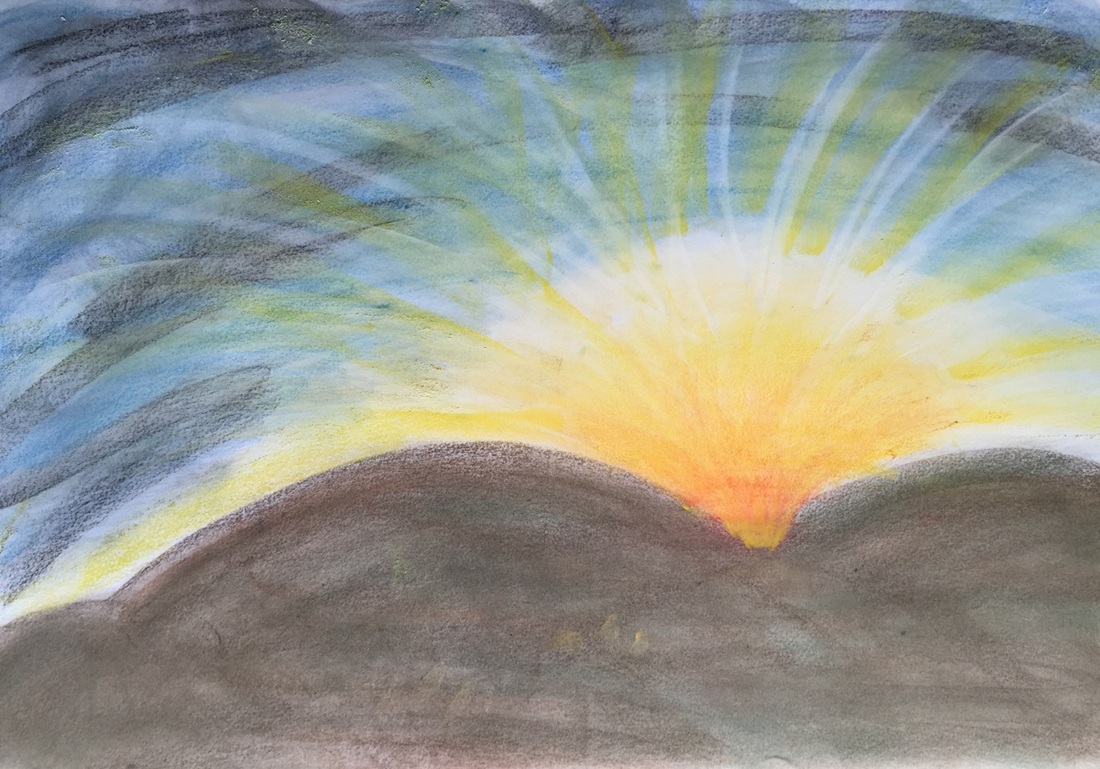
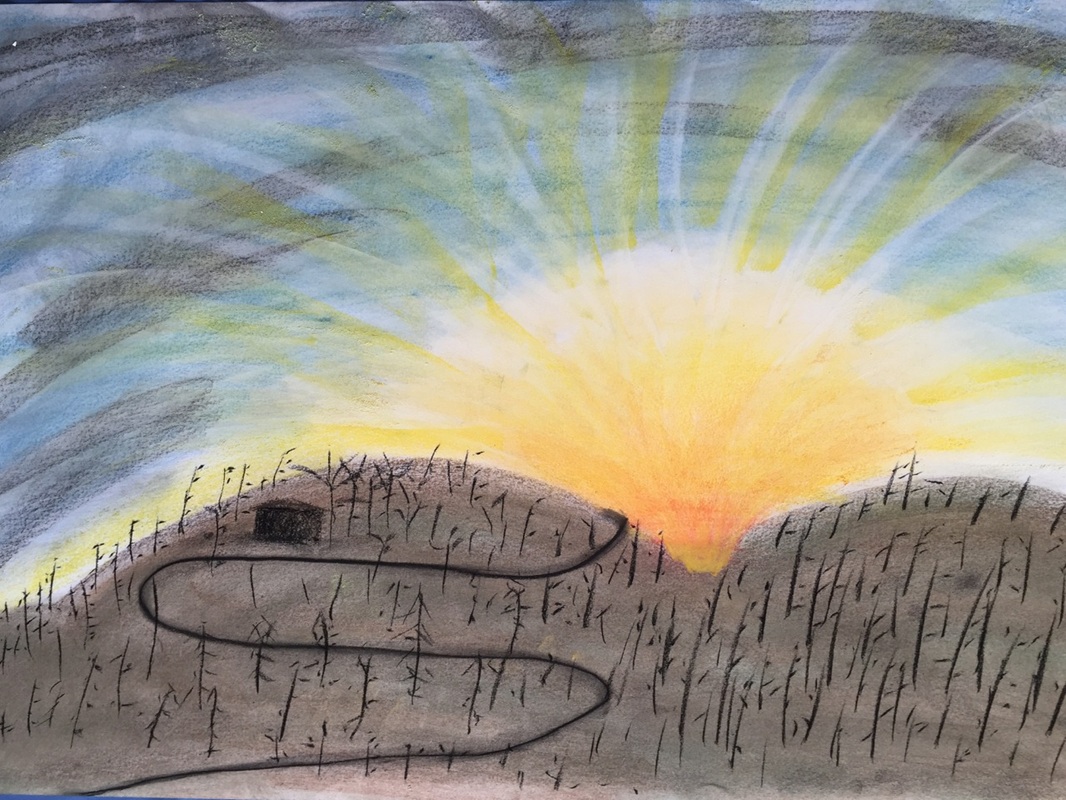
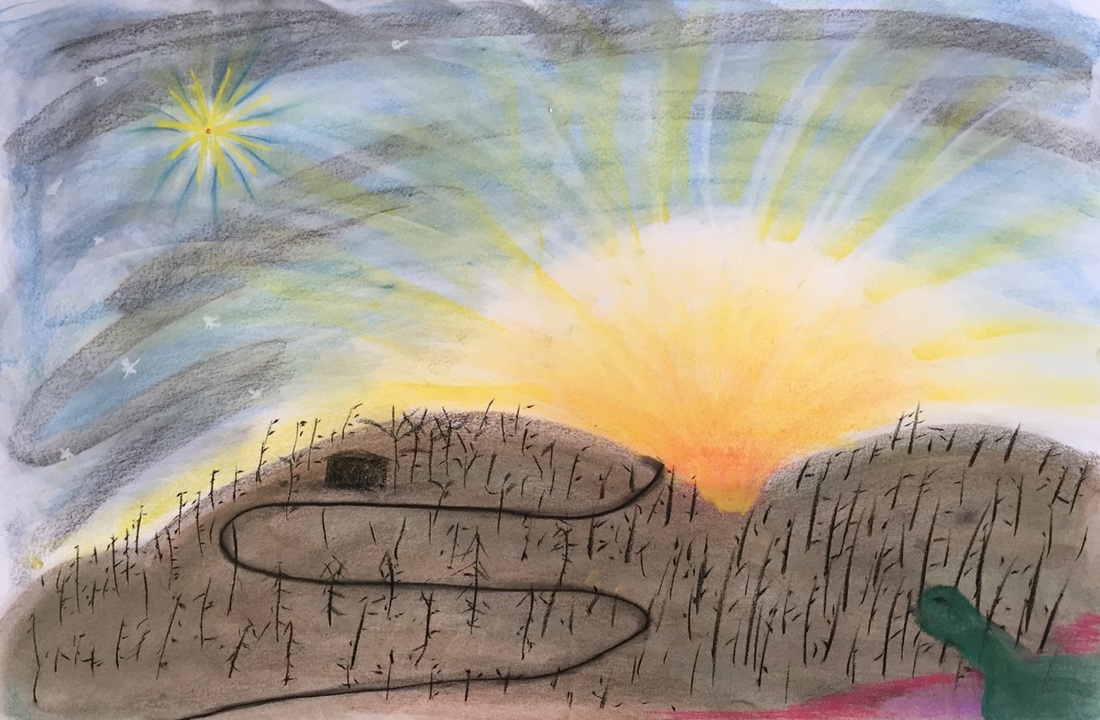
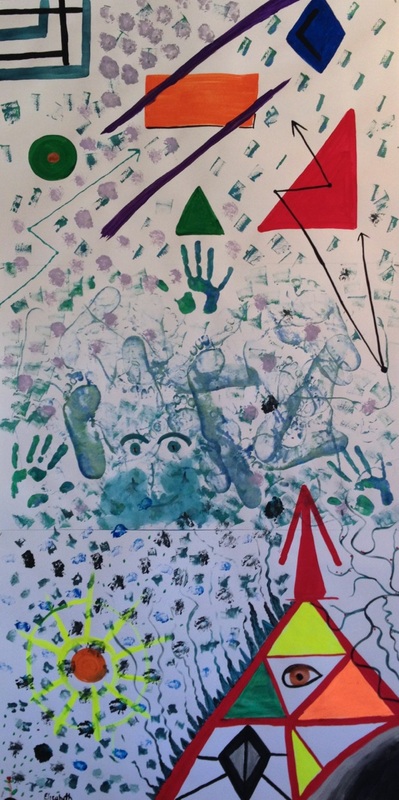

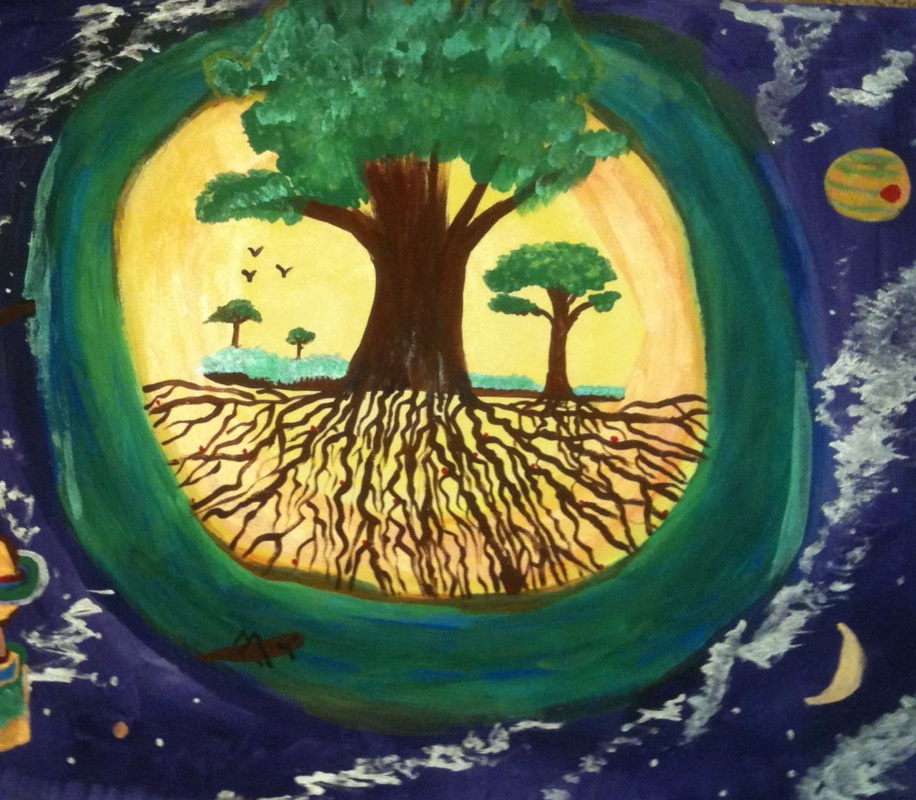
 RSS Feed
RSS Feed
